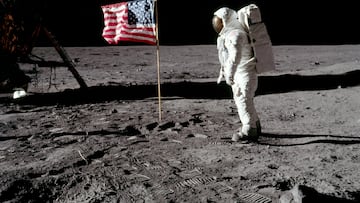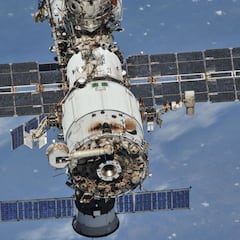Which countries have landed on the Moon and in what year did they achieve it?
With the feat of the Vikram spacecraft, India joined the small group of nations to have reached Earth’s solitary satellite.

Since the dawn of time, humanity has gazed at the sky in search of answers. The constellations, the planets blending with stars, the Milky Way – all of these elements paint a celestial portrait that we have fixated upon to comprehend our own world, as if looking into a mirror. Amidst this web of celestial bodies, there is always one that steals the limelight of the night: Earth’s natural satellite, the Moon.
Therefore, when in the mid-20th century, humankind ascended to the heavens it had always observed and curiously analysed, planting a foot on the lunar surface, something changed.
Apollo 11. Surveying the universe. Beholding your planet suspended in a dark void. On July 20, 1969, amid the tensions of the Cold War, a new chapter blossomed. While it might go unnoticed by a public focused on the American flag fluttering over the ashen ground, other countries have also succeeded in landing on the so-called Sea of Tranquility.
The Space Race: the United States and the Soviet Union
All newspapers have reported on the achievement of Vikram. The spacecraft from India has fulfilled its ‘Chandrayaan-3′ mission by successfully landing on the lunar South Pole, where suspicions of vast reserves of frozen water reside. A few days prior, Russia had experienced a similar lunar landing failure. Collisions occurred.
India just became the first country to have a successful controlled landing near the south pole of the moon! #space #breakingnews #astronomy #nasa #isro #moonlanding pic.twitter.com/FUGuwDoLvg
— Astro Alexandra 🪐 Space Communicator (@astro_alexandra) August 23, 2023
But it wasn’t always so. Before Russia evolved into the current Federation, during Soviet times, luck favoured their attempt to touch the skies. The year was 1959, a decade before Neil Armstrong set foot on the satellite and uttered the famous words, “That’s one small step for a man, one giant leap for mankind.” Also during the height of the Cold War. The USSR managed to leave its mark as the first country to send an object to the Moon and successfully land it.
Despite their initial advantage, the American NASA monopolized the successes of the space race. Following Apollo 11, the United States launched five more manned missions: Apollo 12, 14, 15, 16, and 17. All between 1969 and 1972. Since that year, no one has set foot on the Moon again. In between lies Apollo 13, which failed to land due to a cabin malfunction, famously signaled by the phrase, “Houston, we have a problem.”
China’s celestial rise
Related stories
Another power has managed to reach the Moon, albeit in a more discreet manner, far from the media spotlight that shone on the USSR and the USA. While they had completed previous missions with orbiters and even an impactor, China fully entered the second leg of the space race in 2013. A decade ago, Beijing successfully placed its first rover, named Yutu, on the satellite.
To the prestigious trio of countries that have sent probes to the Moon, another must be added. Now they are four. And the latest addition, sent by India, holds a unique distinction. As mentioned, it marks the only occasion on which a lunar landing has been achieved at the South Pole. Several other nations are tightening the screws on their latest projects to join a conquest that, in the words of John F. Kennedy, “deserves the best of all humanity.”

